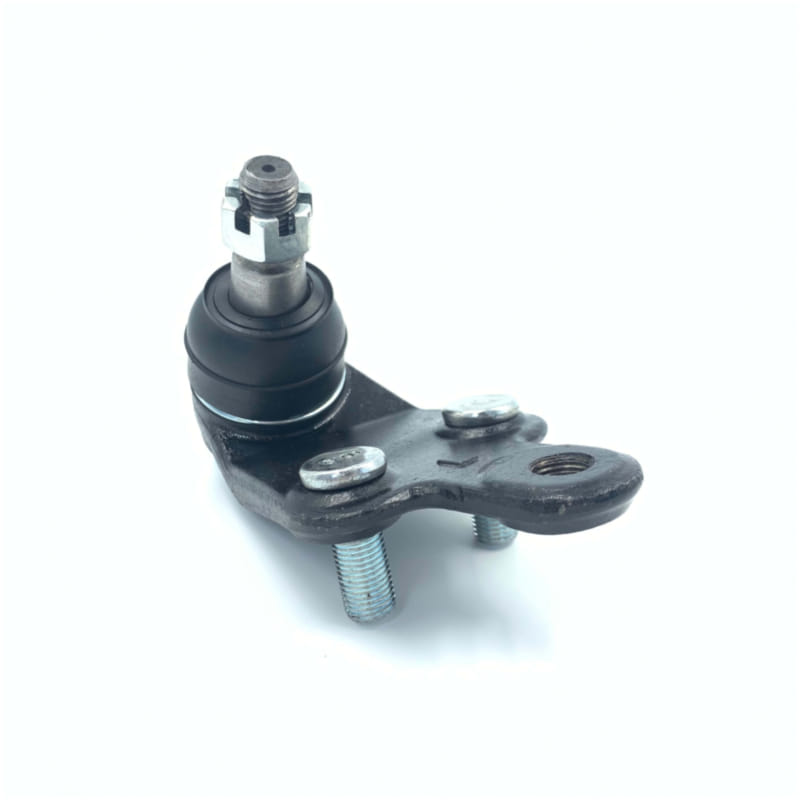Ball joints play a crucial role in both front and rear suspension systems of vehicles, but their design and function can differ based on their location.
Here’s how ball joints differ between front and rear suspension systems:
Front Suspension Ball Joints:
- Complexity: Front suspension systems are typically more complex and require multiple ball joints. Common configurations include upper and lower ball joints, which connect the front wheels to the suspension and steering components.
- Steering Functionality: The upper ball joint in the front suspension is often connected to the steering knuckle, allowing for the movement of the front wheels and the transfer of steering input from the driver.
- Support for Engine Weight: Front suspension ball joints bear a significant portion of the vehicle’s weight, as they support the engine’s mass. This requires robust and durable design and materials to handle the load.
- Alignment Control: Front ball joints play a critical role in controlling wheel alignment, ensuring that the front wheels remain in proper position for handling and tire wear.
- Impact on Handling: Front suspension ball joints significantly impact the vehicle’s handling, including factors like cornering stability, steering responsiveness, and the ability to absorb road imperfections.
Rear Suspension Ball Joints:
- Simplicity: Rear suspension systems are generally simpler in design. They often include a single lower ball joint, though some vehicles may have multiple ball joints in more complex rear suspension systems.
- Less Weight-Bearing: Rear ball joints are less likely to bear the weight of the engine, as the engine is primarily supported by the front suspension. This allows for a less robust design.
- Vertical Load Handling: Rear ball joints primarily handle vertical loads, such as the vehicle’s weight and cargo. They are less affected by steering forces and lateral movement, which is the primary function of front suspension ball joints.
- Ride Comfort and Stability: Rear ball joints focus on alignment and controlled wheel movement, which contributes to a smoother and more stable ride. They play a significant role in ensuring that the vehicle’s rear wheels maintain proper alignment and tire contact with the road.
In summary, front suspension ball joints are more complex, handle steering functions, and support the engine’s weight. They have a direct impact on the vehicle’s handling and responsiveness. Rear suspension ball joints, on the other hand, are simpler, focusing on maintaining alignment, controlled wheel movement, and ride comfort. Their role is primarily associated with supporting vertical loads and providing stability. The specific design and characteristics of these ball joints can vary depending on the vehicle’s make and model and the type of suspension system used.
What is the primary function of ball joints in a vehicle’s suspension system?
The primary function of ball joints in a vehicle’s suspension system is to provide a flexible and pivot point connection between various suspension components, allowing for controlled movement and articulation of the wheels and suspension. Ball joints are essential for several reasons:
- Support and Connection: Ball joints connect the vehicle’s control arms (or wishbones) to the steering knuckle or spindle on the wheel hub. This connection provides structural support and allows the suspension to articulate as the wheels move up and down to adapt to road irregularities.
- Controlled Movement: Ball joints are designed to allow for a controlled range of motion, which is crucial for proper wheel alignment and handling. They permit vertical movement of the suspension while enabling the wheels to pivot for steering.
- Alignment Maintenance: Ball joints play a key role in maintaining proper wheel alignment. They help ensure that the wheels remain perpendicular to the road surface, preventing uneven tire wear and optimizing handling.
- Steering Responsiveness: In the front suspension, ball joints are connected to the steering knuckle, allowing for the transmission of steering input from the driver to the wheels. This linkage is essential for steering responsiveness and control.
- Load Distribution: Ball joints distribute the weight of the vehicle, including the engine’s weight, evenly to the wheels. They help support the vehicle’s weight while allowing for dynamic movement.
- Absorption of Road Imperfections: Ball joints, along with other suspension components like shock absorbers, contribute to the vehicle’s ability to absorb and dampen the impact of road imperfections, such as bumps and potholes. This enhances ride comfort and stability.
- Enhanced Traction and Grip: Properly functioning ball joints ensure that the tires maintain consistent contact with the road, enhancing traction and grip, particularly when navigating turns or uneven terrain.
- Safety and Handling: Well-maintained ball joints are critical for vehicle safety and handling. Worn or damaged ball joints can result in poor alignment, compromised steering, and handling issues, which can affect the safety and performance of the vehicle.
In summary, ball joints are a fundamental component of a vehicle’s suspension system, responsible for connecting various suspension parts, supporting the vehicle’s weight, allowing for controlled movement, maintaining alignment, and contributing to steering responsiveness, ride comfort, and safety. Their proper functioning is essential for the overall performance and safety of the vehicle.
